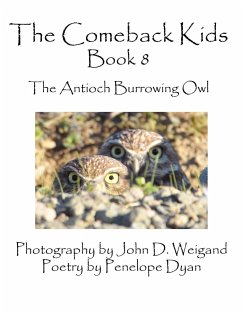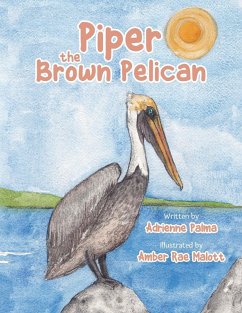
The Comeback Kids, Book 3, the California Brown Pelican

PAYBACK Punkte
14 °P sammeln!
The California brown pelican (P.o. californicus) is a subspecies of the widely distributed brown pelican and is the smallest of all the pelicans in the pelican family. The California brown pelican breeds along the Gulf of California from the Sinaloa and Nayarit coast of Mexico, along the Pacific coast of Baja California, and north to the California Channel Islands. Non-breeding pelicans can be seen along the Pacific coast all the way to the up to the state of Washington and British Colombia. There were huge California brown pelican losses from about 1940 to 1970. The species was listed as enda...
The California brown pelican (P.o. californicus) is a subspecies of the widely distributed brown pelican and is the smallest of all the pelicans in the pelican family. The California brown pelican breeds along the Gulf of California from the Sinaloa and Nayarit coast of Mexico, along the Pacific coast of Baja California, and north to the California Channel Islands. Non-breeding pelicans can be seen along the Pacific coast all the way to the up to the state of Washington and British Colombia. There were huge California brown pelican losses from about 1940 to 1970. The species was listed as endangered by the U.S. Fish and Wildlife Service in 1970 and a year later, it was enlisted as endangered by the California Fish and Game Commission. The California brown pelican is a fully protected species under California Fish and Game Code, Section 3511. Delisting of the species as endangered is finally being considered, and this would be a happy announcement for those of us who love this fascinating bird. So how did the California brown pelican become endangered? It became endangered primarily as a result of the pesticide DDT. The shells of the nesting birds became so brittle that they cracked and were destroyed during the nesting process. It was sad for the California brown pelican, but the good thing was it alerted the California people to the dangers of DDT, and this led to the passage of several environmental protection laws in the late 1960¿s and the early 1970¿s. And DDT was finally banned in the United States in 1972 amid public outcries against the pesticide. However, before DDT caused declination of this species, humans disturbing the breeding colonies and roosts caused a lowering of their numbers and this also interfered with their reproduction. To top it all off, oil spills and entanglement in fishing tackle further damaged the species (and continue to damage this species). There were few California brown pelicans to be seen during the 1960s and 1980s, but now they can finally be seen again long the U.S. West Coast! The California brown pelican is a true Comeback kid! The Photographs by John D. Weigand were taken with reverence at the direction of this author off the coast of La Jolla, California, where the California Brown pelicans thrive at a place called the La Jolla Cove.












